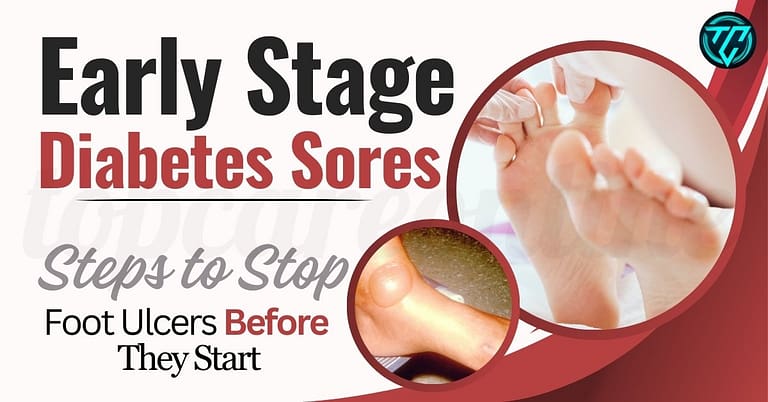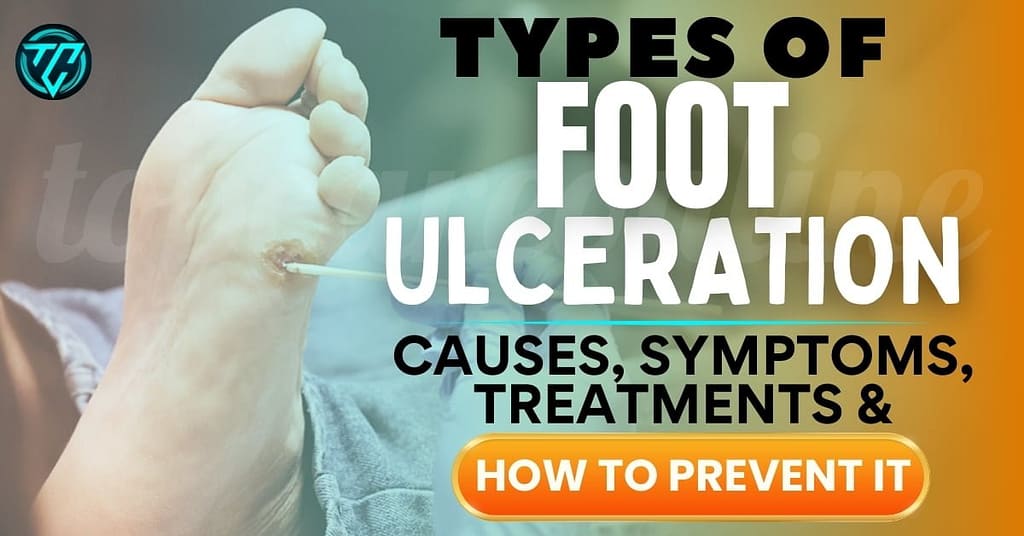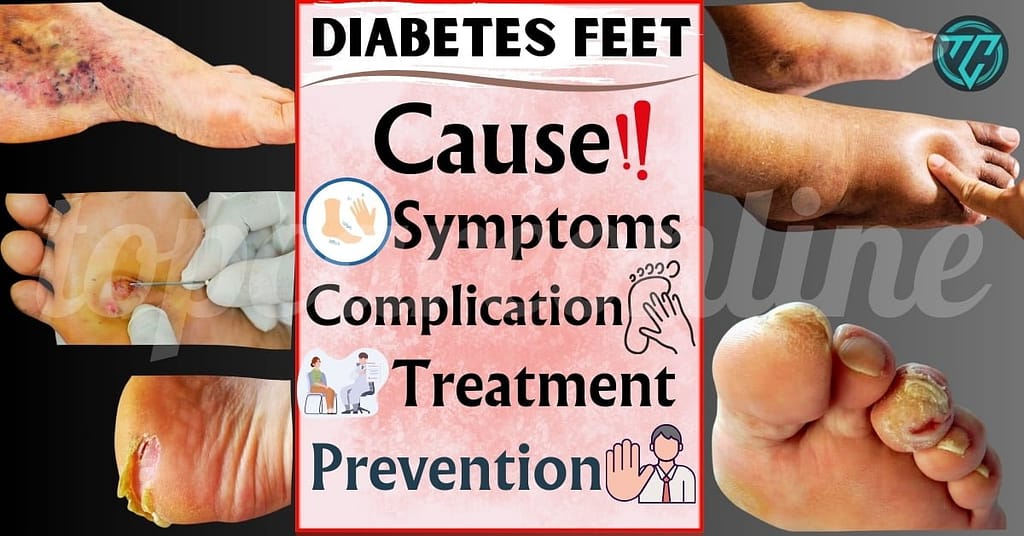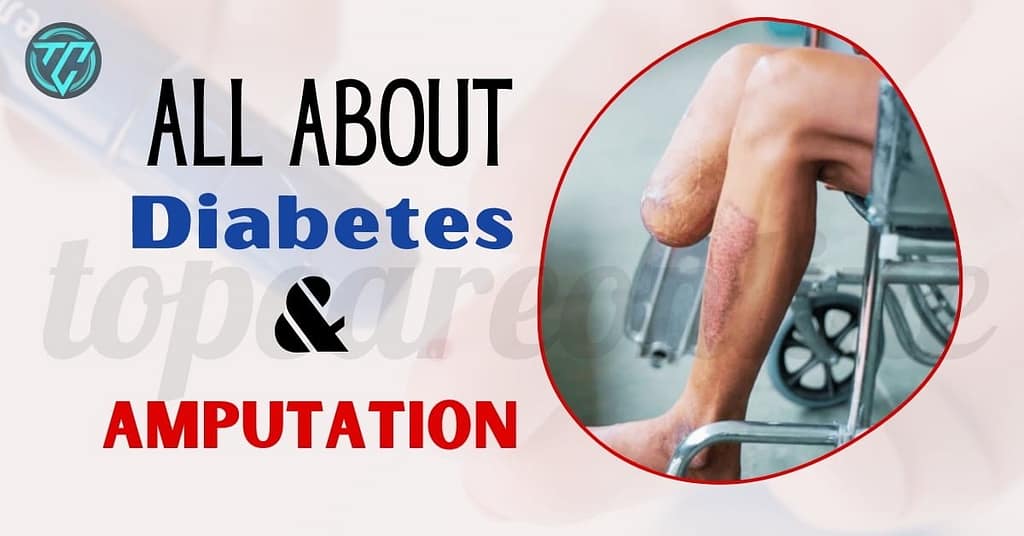Common Locations | Causes | Identifying | Treatment Strategies | Preventive Measures |
Early stage diabetic sores, also known as diabetic foot ulcers, are a common yet critical issue for individuals with diabetes. These sores, often indicative of more serious complications, can lead to severe health problems if not addressed promptly.
What Are Early Stage Diabetic Sores?
Early stage diabetic sores refer to the initial manifestations of diabetic foot ulcers. These sores typically appear on the feet and are characterized by minor skin changes that can progress if not managed correctly. The development of these sores is often related to poor blood sugar control, reduced blood flow, and neuropathy—a condition where nerves become damaged and lose sensation.
Common Locations for Early Stage Diabetic Sores
Early-stage diabetic sores, or diabetic ulcers, commonly appear in areas that are prone to pressure, friction, or injury. These areas typically include:
- Feet: This is the most common site, especially on the soles, heels, and between the toes. Poor circulation and neuropathy make the feet particularly vulnerable.
- Toes: The tips and sides of the toes can develop sores due to poor fitting shoes, pressure, or friction.
- Ankles: Areas around the ankles may be affected, especially if there is repeated friction or pressure.
- Legs: Particularly the lower legs, where poor circulation can lead to ulceration.
- Areas of Previous Injury: Any site that has experienced trauma or injury can become a focal point for diabetic sores.
Causes of Early Stage Diabetic Sores
Early-stage diabetic sores, also known as diabetic ulcers, can result from a combination of factors related to diabetes and its complications. Here are the primary causes:
- Poor Circulation: Diabetes can lead to reduced blood flow, especially in the extremities. This impairs the healing process and makes the skin more susceptible to sores and ulcers.
- Nerve Damage (Neuropathy): High blood sugar levels can cause nerve damage, leading to loss of sensation in the feet and legs. Without feeling pain or discomfort, minor injuries can go unnoticed and develop into sores.
- High Blood Sugar Levels: Persistent high blood sugar can damage blood vessels and nerves, contributing to poor wound healing and increased susceptibility to infections.
- Pressure and Friction: Ill-fitting shoes or prolonged pressure on certain areas of the body, such as from walking or standing for long periods, can create sores. This is especially common on the feet and toes.
- Trauma or Injury: Minor cuts, blisters, or bruises that go untreated can become ulcers, particularly in people with diabetes due to impaired healing processes.
- Infections: Diabetic individuals are at higher risk for infections due to compromised immune response. An infection in a small wound or sore can quickly escalate into a more severe ulcer.
- Dry Skin: Diabetes can lead to dry and cracked skin, which is more prone to injuries and infections.
- Poor Foot Hygiene: Inadequate foot care can contribute to the development of sores. Regular inspection and proper hygiene are essential to prevent issues.
Managing blood sugar levels, practicing good foot care, and addressing minor injuries promptly can help prevent the development and progression of diabetic sores.
Identifying Early Stage Diabetic Sores
Early detection is key to preventing the progression of diabetic sores. Here are some signs to look out for:
- Redness: Initial areas of redness may indicate irritation or the start of an ulcer.
- Swelling: Swelling around a sore can suggest inflammation or infection.
- Blisters or Cuts: Small blisters or cuts on the feet that do not heal within a reasonable time may be early indicators.
- Discoloration: Darker patches of skin or changes in skin color can be a warning sign.
Diagnostic and Evaluation Process
Proper diagnosis and evaluation are essential for effective treatment. The following methods are commonly used:
- Physical Examination: A healthcare provider will inspect the foot for any signs of sores, infections, or abnormalities.
- Medical History Review: Understanding the patient’s diabetes management and history of foot problems helps in assessing the risk.
- Imaging Tests: X-rays or other imaging techniques may be used to rule out bone infections or other complications.
Treatment Strategies for Early Stage Diabetic Sores
Treating early stage diabetic sores involves a combination of wound care and management of underlying conditions. Here’s a detailed approach:
- Wound Care:
- Cleaning: Gently clean the sore with mild soap and water to prevent infection.
- Dressing: Apply appropriate dressings to keep the sore clean and protected.
- Debridement: Removal of dead or infected tissue may be necessary to promote healing.
- Blood Sugar Management:
- Medication: Follow prescribed treatments to manage diabetes effectively.
- Monitoring: Regularly check blood glucose levels to ensure they are within the target range.
- Pressure Relief:
- Orthotics: Custom insoles or foot pads can help distribute pressure more evenly.
- Footwear: Use well-fitted, supportive shoes to reduce pressure on affected areas.
- Infection Control:
- Observation: Regular follow-ups to monitor the healing process and address any complications.
- Antibiotics: If an infection is present, antibiotics may be prescribed.
Preventive Measures
Preventing the onset of early stage diabetic sores involves proactive foot care and lifestyle adjustments. Here are essential steps:
- Daily Foot Inspections: Check feet daily for any signs of injury, blisters, or changes in skin condition.
- Proper Footwear: Invest in comfortable, well-fitting shoes and avoid walking barefoot.
- Good Hygiene: Keep feet clean and dry to prevent infections.
- Healthy Lifestyle: Maintain a balanced diet and exercise regularly to improve circulation and overall health.
- Regular Medical Check-Ups: Regular visits to a healthcare provider can help catch issues early and adjust diabetes management plans as needed.
When to Seek Professional Help
If you notice any signs of early stage diabetic sores or if an existing sore is not improving, it is crucial to seek medical attention promptly. Early intervention can prevent further complications and improve the likelihood of successful treatment.
Early stage diabetic sores, while often manageable, require vigilant attention to prevent escalation. By understanding the causes, recognizing the early signs, and implementing effective treatment and prevention strategies, you can significantly reduce the risk of serious complications.






